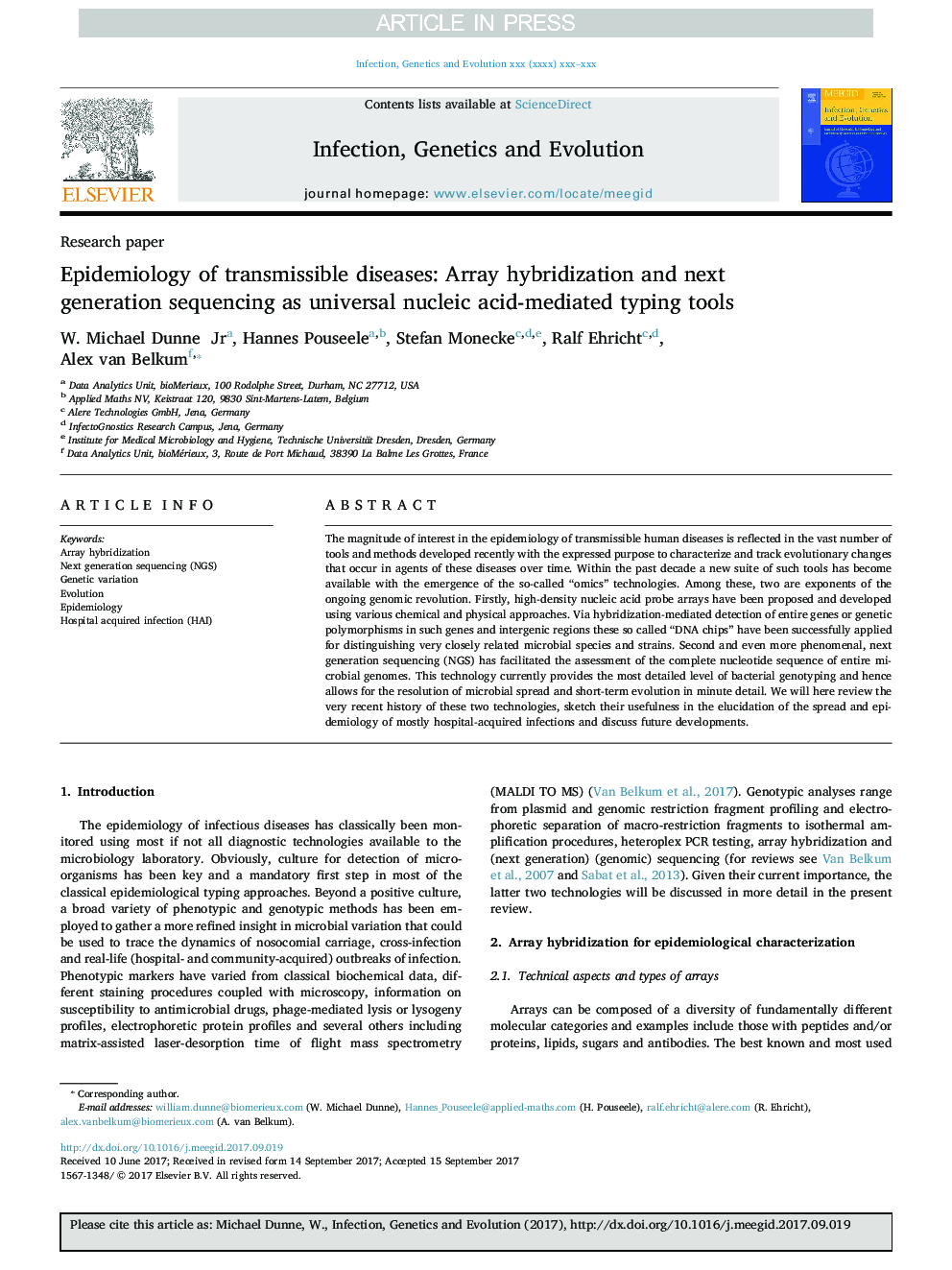| کد مقاله | کد نشریه | سال انتشار | مقاله انگلیسی | نسخه تمام متن |
|---|---|---|---|---|
| 8646697 | 1570140 | 2018 | 14 صفحه PDF | دانلود رایگان |
عنوان انگلیسی مقاله ISI
Epidemiology of transmissible diseases: Array hybridization and next generation sequencing as universal nucleic acid-mediated typing tools
ترجمه فارسی عنوان
اپیدمیولوژی بیماری های قابل انتقال: هیبریداسیون آرایه و تعیین توالی نسل بعدی به عنوان ابزار جهانی تایپ آماری با استفاده از اسید نوکلئیک
دانلود مقاله + سفارش ترجمه
دانلود مقاله ISI انگلیسی
رایگان برای ایرانیان
کلمات کلیدی
موضوعات مرتبط
علوم زیستی و بیوفناوری
علوم کشاورزی و بیولوژیک
بوم شناسی، تکامل، رفتار و سامانه شناسی
چکیده انگلیسی
The magnitude of interest in the epidemiology of transmissible human diseases is reflected in the vast number of tools and methods developed recently with the expressed purpose to characterize and track evolutionary changes that occur in agents of these diseases over time. Within the past decade a new suite of such tools has become available with the emergence of the so-called “omics” technologies. Among these, two are exponents of the ongoing genomic revolution. Firstly, high-density nucleic acid probe arrays have been proposed and developed using various chemical and physical approaches. Via hybridization-mediated detection of entire genes or genetic polymorphisms in such genes and intergenic regions these so called “DNA chips” have been successfully applied for distinguishing very closely related microbial species and strains. Second and even more phenomenal, next generation sequencing (NGS) has facilitated the assessment of the complete nucleotide sequence of entire microbial genomes. This technology currently provides the most detailed level of bacterial genotyping and hence allows for the resolution of microbial spread and short-term evolution in minute detail. We will here review the very recent history of these two technologies, sketch their usefulness in the elucidation of the spread and epidemiology of mostly hospital-acquired infections and discuss future developments.
ناشر
Database: Elsevier - ScienceDirect (ساینس دایرکت)
Journal: Infection, Genetics and Evolution - Volume 63, September 2018, Pages 332-345
Journal: Infection, Genetics and Evolution - Volume 63, September 2018, Pages 332-345
نویسندگان
W. Jr, Hannes Pouseele, Stefan Monecke, Ralf Ehricht, Alex van Belkum,
